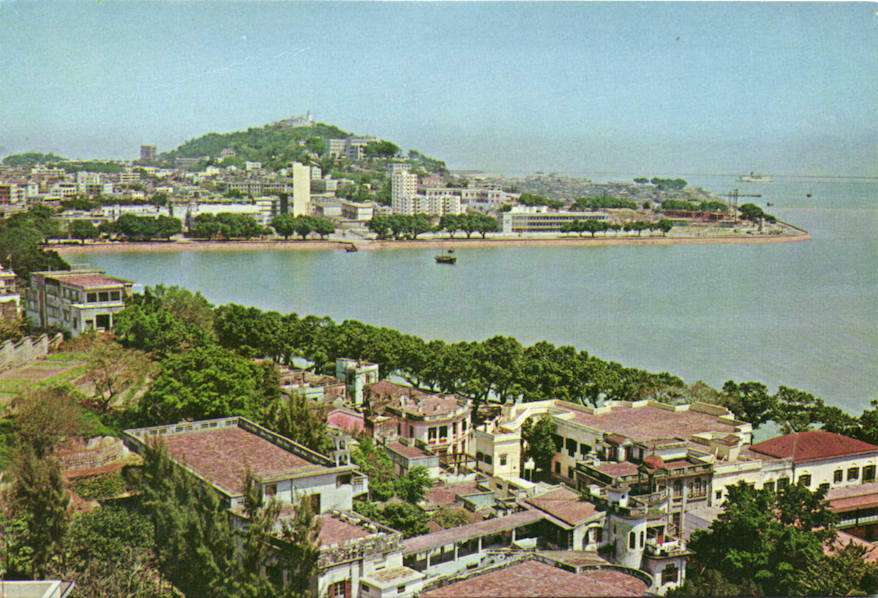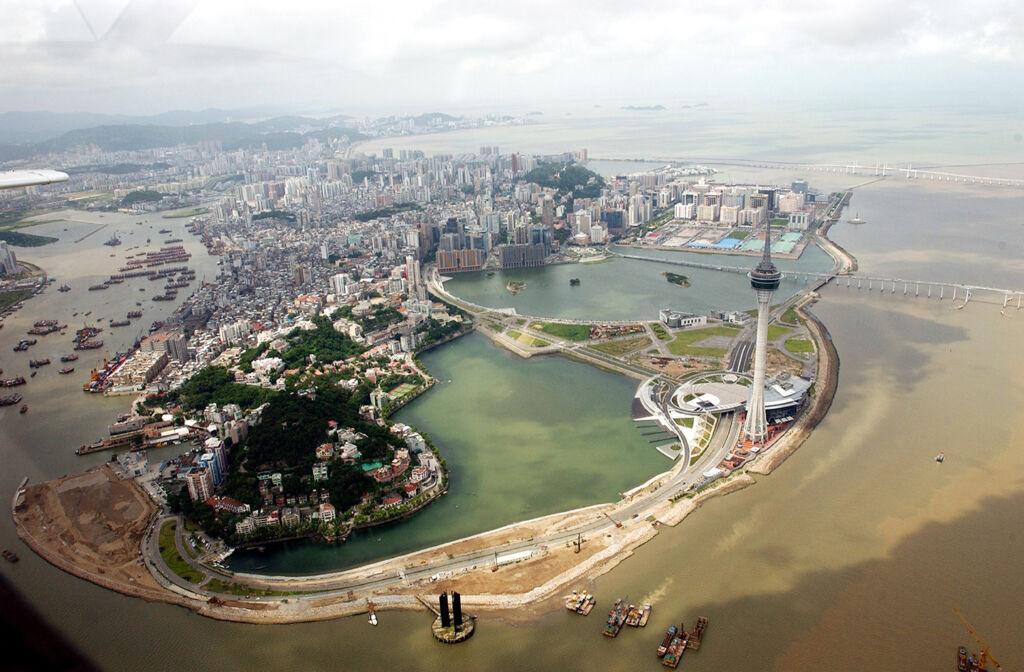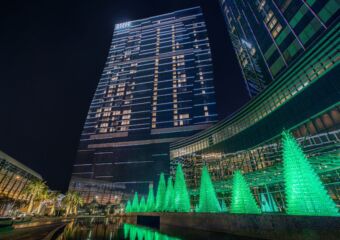Featured image: Nam Van area. Credits: Government Information Bureau
It wasn’t easy to choose just one of Manuel Vicente’s–dubbed “The Macau Architect”–to start this article. The number of projects that positively influenced the city’s landscape is near incalculable, leaving a strong design imprint for generations to come and probably creating the most appealing Macau architecture walkthrough you can find in the territory. Praia Grande Bay, whose urban plan for which Manuel Vicente was responsible, is one of the most photographed places in Macau since the early last century. His introduction of the two lakes, Nam Van and Sai Van, two water mirrors connected to the shore, is one good example of creating harmony, appeal, and an outline of the previous space, instead of simply proceeding with the land reclamation of the river.
Together with Portuguese architects Rui Leão and Francesca Bruni, Manuel Vicente created the beautiful and contemporary design of Nam Van square, located between the Legislative Assembly and Anim’Arte Nam Van (see featured image above). You can spot it while strolling along; it’s the shaded area where groups of friends dance, chat, and relax during the day, but especially when the sun goes down.
Also read: Off the Beaten Path: Exploring Sai Van & Nam Van Lake
Also read: Nam Van: Creative Scene in Macau

Praia Grande Bay, 1960s
Geometry & Cinematic Perspectives
As another example of Vicente’s vision and beautiful geometry, the picture above depicts two buildings close to the water (the red and the blue) which followed Manuel Vicente’s original plan; the exposed columns below with a perfect balance and symbiosis with the lake.
During his time in Macau, he was responsible for strong and somehow “cinematic” works (he was a big fan of cinema and he usually related to and was inspired in his projects by, movies or cinema-related objects). Some say that one of Manuel Vicente’s biggest achievements is the artistic and conceptual intersection of his Macau works in other stops such as Lisbon. This can be explained by his time and professional experience in the region. He used to say it was never his intention to become part of the local social tissue or even to absorb the local culture.
However, that might have happened somehow, because both Casa dos Bicos (in Lisbon) and the Macao Archives have similar touches. According to an article by Jorge Figueira, “the geometrical theme of the lateral window (of the Macao Archives) corresponds to the frames’ creation (…) by António Marques Miguel at Casa dos Bicos”.
Manuel Vicente was born in Lisbon in 1934 and he died there in 2013 at the age of 78. He started working in Goa but it was in Macau that he received most of the recognition for his work. He first came to the region in 1962 to work, like so many other Portuguese. Arriving in Macau to head the Urban Department, he came back for the second time at the end of the 1970s to stay until the 1990s.
Some of these works do not “live” among us anymore, but the list that we write below could be endless; and the list of awards is also grand where we highlight the AICA/MC International Award, the two times gold medal given by ARCASIA and the Great Office Degree of the Order of Merit given by the Portuguese President Jorge Sampaio.
- Macau World Trade Center (1995)
- Helen Liang Orphanage (1964)
- TDM Macau Television New Building (1986)
- Barra Residencial Towers (1976)
- Hak Sa Wan Fire Department Building (1992)
- Sino-Portuguese Building of Macau University (1993)
- Red Factory (1977)
- Fai Chi Kei Social Buildings (1977)
This article was originally written by Rui Barbosa in January 2017 and updated by Leonor Sá Machado in July 2021.



































